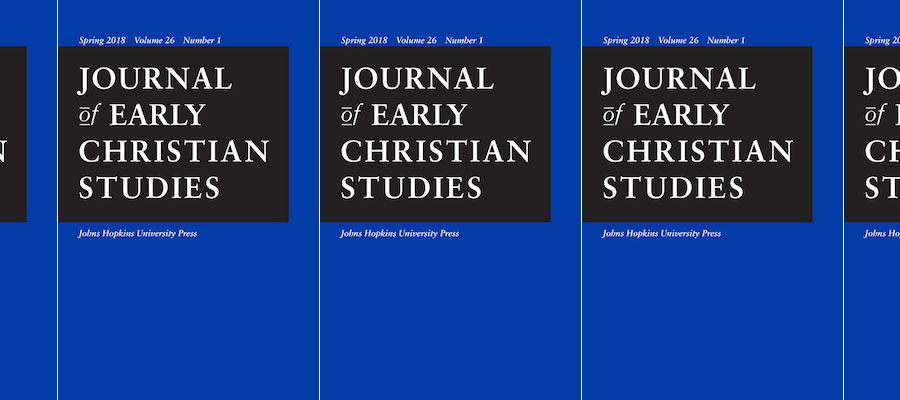Journal of Early Christian Studies, volume 26, number 1 (Spring 2018).
CONTENTS INCLUDE
Between Liturgy and School: Reassessing the Performative Context of Ephrem’s Madrāšê
Jeffrey Wickes
Ephrem the Syrian (d. 373) wrote in a variety of genres—commentaries, verse and prose homilies, and stanzaic songs, called madrāšê. The bulk of his corpus consists in madrāšê. While these works are generally assumed to have occupied a liturgical context, this assumption is based in large part on a biographical tradition that was written after Ephrem’s death, and that has come to be seen as problematic in many ways. Certain of Ephrem’s cycles do connote liturgical settings, but others lack any such clues. This paper argues for a reassessment of the performative context of Ephrem’s madrāšê. It looks, first, at the external literary witness to the liturgical performance of Ephrem’s madrāšê, and shows how the picture of Ephrem presented in the biographical tradition has come to dominate our view of the madrāšâ’s performative context. It then turns to Ephrem’s madrāšê themselves, and argues that they suggest a blurred performative space between liturgy and study circle. It fleshes out this blurred performative space by examining comparative early Christian evidence for the use of songs in educational settings. It concludes by suggesting ways that this re-reading of Ephrem’s madrāšê contributes to the broader field of early Christian studies.
Isaac of Antioch’s Organ and the Media of Musical Subjects
Glenn Peers
This article examines an unstudied text by Isaac of Antioch (active latter half fifth century), in which he described a raucous festival in Antioch, filled with music and revelry. Isaac ruminated on the near-human, near-sentient qualities of musical instruments, and their subjecthood emerged strongly in relation to humans’ in his philosophical memra. At dawn one morning, Isaac was awakened by a water organ, which dictated to Isaac the psalmody for that morning. This article argues for Isaac’s rich exploration of relational mingling of humans, instruments and Psalms, that revealed a milieu of intersubjective richness before God.
Holy Images and Holy Matter: Images in the Performance of Miracles in the Age before Iconoclasm
Christopher R. Sweeney
This paper asks how images came to be regarded as having miraculous power in the centuries before Iconoclasm. It argues that by the fifth century, the miraculous power of relics was intimately connected with their materiality, specifically the belief that relics were imbued with power by contact with a saint. Given this paradigm, images suffered from a lack; if images are representations of saints and not matter touched by them, they should lack the power of relics. Over the course of the sixth and seventh centuries, this apparent lack was overcome by reconceiving images. Rather than simply identifying images with representation, they were understood as material objects in their own right. Understanding images as holy matter rather than representations alone helped usher images into practices of veneration and supplication in the sixth and seventh centuries.
